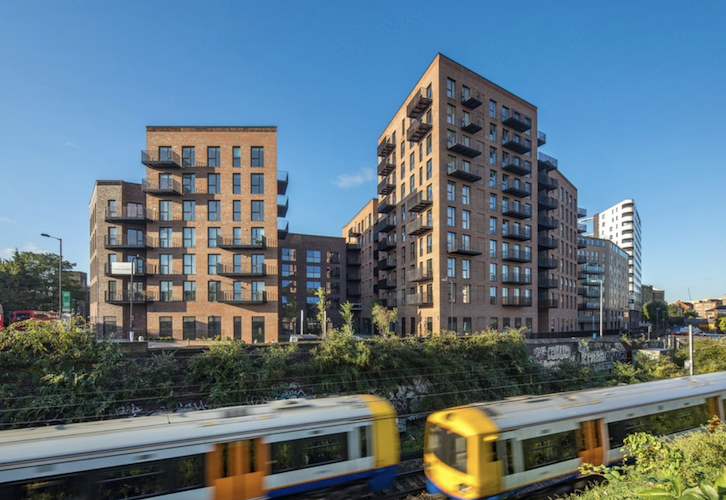The failed appeal by the developers of the controversial Tulip tower could mark a shift in how we assess the impact of skyscrapers in London. While architectural concerns were one of the reasons cited for the scheme’s rejection, the planning report also raised its “poor lifetime sustainability” and in particular the use of tall, reinforced concrete that “would result in a scheme with very high embodied energy and an unsustainable whole-life cycle”.
Six of the capital’s most iconic tall buildings – including The Shard, The Walkie Talkie and The Gherkin – already produce more than 12,000 tonnes of CO2 every year, equivalent to the annual emissions of about 3,000 cars. So after two weeks when the focus of the world has been on COP26, isn’t it time we looked more closely at the materials we use for building?
For more than a century, steel and concrete have been the default structural frame materials for tall buildings. But such constructions have a huge carbon footprint. According to a report by the United Nations Environment Programme (UNEP), emissions from buildings hit their highest-ever level in 2019, putting the climate change reduction targets set in 2016 by the world’s nations in the Paris Agreement at severe risk.
The impact is such that, in order to reach net-zero, the International Energy Agency (IEA) has estimated that direct building CO2 emissions need to fall by 50 per cent by 2030. Clearly, radical change is required. The UNEP report recommended that governments prioritise low-carbon buildings in pandemic stimulus packages and updated climate pledges. Timber structures can provide the answer.
To date, little attention has been focused on this solution. But what if we took a radical, bold step and built 90 per cent of our new buildings from timber? We could reduce global carbon emissions by 4 per cent – more than the total carbon footprint of flying. So if we’re going to continue building towers “plyscrapers” – rather than skyscrapers – would have a significant impact on climate change targets.
The advantage of building with timber can not only make the construction process more sustainable (forging a steel beam produces large amounts of CO2, while growing a tree helps lock it in) but once the building is finished it also has an ongoing reduced CO2 footprint because of its carbon storage qualities.
There are a handful of examples of timber towers around the world: Vancouver has the 18-storey Brock Commons Tallwood House, a student residence; Melbourne has the 37-metre high Forte apartment building; while the 85m Mjøstårnet building in Brumunddal, Norway, is currently the world’s tallest.
More wooden towers are in the pipeline. The 50 metre-high Dock Mill tower planned for Dublin, containing offices and apartments, will soon be one of the highest in Europe. In Berlin, plans have been announced for the 29-storey WoHo building, comprising social and student housing. And in Tokyo, the 70-storey, W350 tower will become the world’s tallest at 350m when completed in 2041.
Some projects have come to fruition in the UK. The Dalston Works apartment block in Hackney (pictured), completed in 2017, is one. There are very few others. Yet it is estimated that the Dalston Works has 50 per cent less embodied carbon when compared to a traditional concrete frame The timber acts as carbon storage, with over 2,600 tonnes of CO2 trapped by the material, which makes the building carbon negative for the first years of its use.
As for worries about chopping down more trees for building, as long as we’re replanting trees and maintaining wildlife, it’s sustainable. In fact, in the last 15 years in the northern hemisphere, total forest cover has increased by an area of around 242,000 square kilometres – roughly the size of the UK. Every seven seconds the sustainable woodlands of Europe yield enough timber to build a four-person home.
A history of tragedies, from the Great Fire of London in 1666 to the Bradford football stadium disaster in1985, mean the idea of using timber is indelibly linked with the risk of fire. And the shadow of Grenfell, of course, still looms large. But the material used for timber buildings isn’t just any old wood. Technology means these structures can be not only low-carbon, but safe.
Glulam – glued and laminated timber – is super-strong. It is cross-laminated, with thin layers of timber placed across one another at right angles, and laminated with fire-resistant glue to create a stronger weave. Yes, timber can burn, but – as opposed to other building materials – it burns predictably.
Picture a big log on a campfire: smaller branches around it will burn down completely overnight, but the big log will still be there in the morning. In fire tests, cross-laminated timber formed a charcoal layer, but the core was protected. The approval of the world’s first all-timber football stadium for League Two’s Forest Green Rovers also shows just how far we’ve moved on from the Bradford fire.
Other governments have encouraged the construction of timber buildings. Back in 2010, Japan’s passed the Promotion of Use of Wood in Public Buildings Act, France has decreed that half of all public buildings should be constructed with timber, while in Canada, British Columbia has the Wood First Act, requiring all public buildings to be primarily be made from the material. Developers there must prove that it’s not suitable to use timber before turning to conventional products.
If Boris Johnson wants to make good on his pledge not only to build back better but to build back greener, he needs to up the pace on building timber structures.
Clive Docwra is managing director of McBains, a property and construction consultancy. Image from Waugh Thistleton Architects
On London is a small but influential website which strives to provide more of the kind of journalism the capital city needs. Become a supporter for £5 a month or £50 a year and receive an action-packed weekly newsletter and free entry to online events. Details here.
